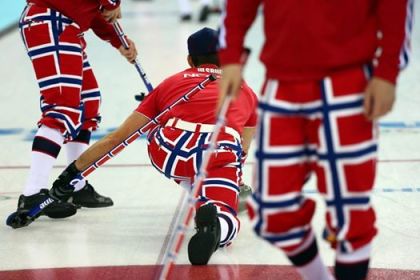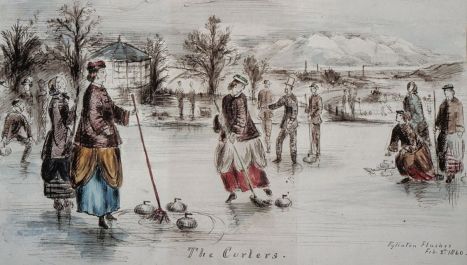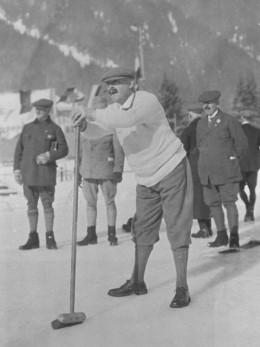There’s a reason curling is known as “chess on ice.”
On its surface, the game is simple. Two teams of four players each take turns sliding eight 44-pound granite stones (“rocks”) across the “sheet” toward the “house”, the circular target at the far end of the ice. At the conclusion of a round – called an “end” – points are awarded to whichever team has a rock closest to the “button” (the center of the target). That team gets one point for each rock closer to the button than the competitors’ nearest rock. Whoever has the most points at the conclusion of 10 ends wins.
However, curling takes not just fitness and teamwork, but a great deal of smarts — hence the “chess on ice” moniker. Yet while curlers may be the brainiacs of the Olympic world, ask any curler the origins of the game and you might not get an answer. The origins of the magnificence that is modern curling are sadly obscure.
The first written evidence of curling dates from 1540, when a Scottish notary recorded a challenge between a monk from Paisley Abbey and a representative of the abbot. Scotland is where the first recognized Curling Clubs were formed, and it was the Scots who, in the 19th century, brought the game with them when they settled in other countries with cold climates.
The 19th century also saw the first international curling events in Europe and North America. Curling made its unofficial Olympic debut in 1924 at the first Winter Games, in Chamonix, France, at which Great Britain defeated Sweden and France — though it wasn’t until 2006, that the International Olympic Committee (IOC) retroactively awarded the teams medals. Curling was otherwise a demonstration sport until its official Olympic debut at the 1998 Nagano games.
A few curling fun facts:
The ice on the sheet is rough. Sweeping it creates moisture and reduces friction beneath the rock. This makes it go faster and farther, and decreases the amount of curl.
The captain of the team is called the “Skip,” and it’s he or she who calls the shots.
The last rock of an end is known as the “Hammer.” The team having the hammer is the most likely to score.
The most points that can be scored in one end is 8 – in curling terms, a “snowman.” (Click here for more curling terminology).
The first World Wheelchair Curling Championship was held in January 2002 and curling is recognized as a Paralympic sport.
The Norwegian Olympic Curling Team’s Pants has over ½ million “likes” on Facebook. That’s about 100,000 more “likes” than Vladimir Putin.
But, then again, at least the Norwegian curling team wears shirts.




Correction — the Norwegian curling team does not always wear shirts. Thomas Ulsrud, the team’s skip, appears shirtless in the 2014 Men of Curling calendar. http://www.menofcurling.com/